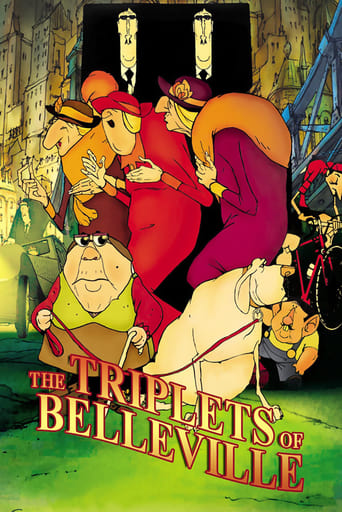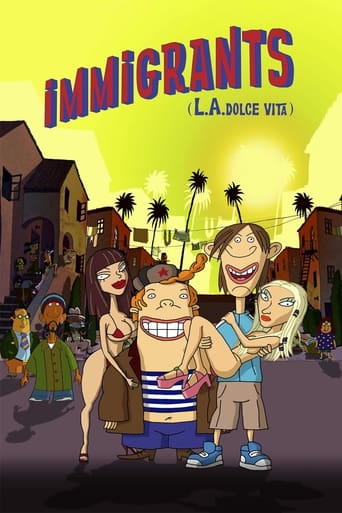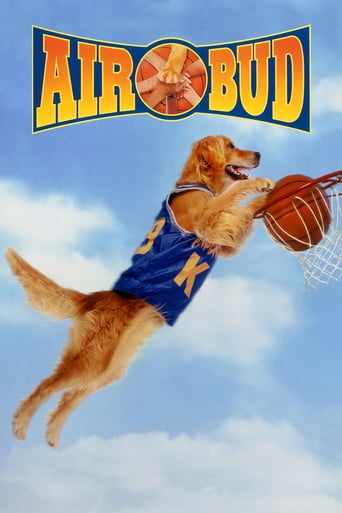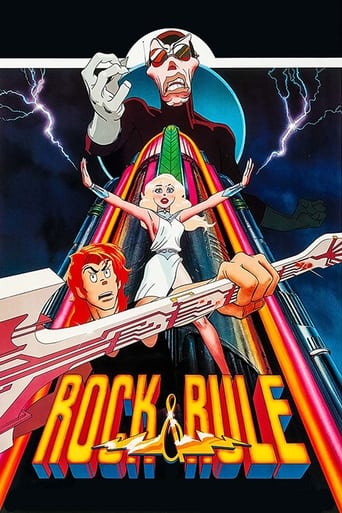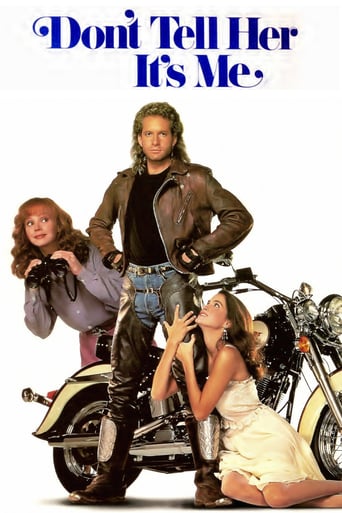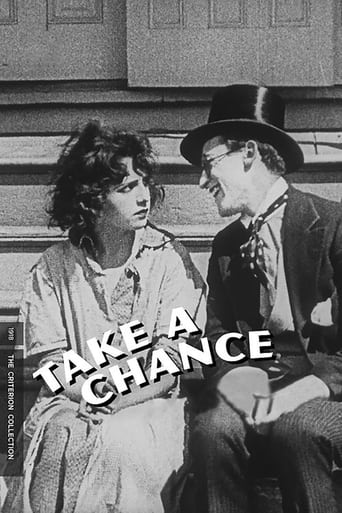The Triplets of Belleville (2003)
When her grandson is kidnapped during the Tour de France, Madame Souza and her beloved pooch Bruno team up with the Belleville Sisters—an aged song-and-dance team from the days of Fred Astaire—to rescue him.
Watch Trailer
Cast


Similar titles
Reviews
Good , But It Is Overrated By Some
Fresh and Exciting
Entertaining from beginning to end, it maintains the spirit of the franchise while establishing it's own seal with a fun cast
By the time the dramatic fireworks start popping off, each one feels earned.
I watched this movie in French class last year. Not a single person in my class liked it. It was foul and disgusting, but not in the sense of something like vomit. It was more of a "get out of my face" kind. It's just such an ugly film I wish I could give it a 0. I've watched it in both French and English, and neither was a pleasant experience. I know somebody who said it was their favorite animated film, and nobody there knew about the film, except me. We were arguing, but he couldn't really say anything against what I was saying other than "It was supposed to be like that." I would say it was boring or it was ugly, but he wouldn't listen. It's not odd or charming like a Miyazaki film. It's ugly and repulsive like Batman Returns.
Hate is a strong word yet it applies here as I did hate this film. It was rather boring and just pointless. Anyone who says the animation was top notch and better than most Disney or Pixar stuff is on something. The first part of the movie is done in B&W which looks like something out of a 1940's Merry Melodies cartoon, the rest of the movie is done in color and looks a lot like the animation from the Beatles animated movie "Yellow Submarine" with scenery and characters all drawn in weird surreal type images. I found this type of animation to be out of place and really ugly ,not in a bizarre way, just in a cheap way.My other reasons for hating it are virtually no dialog which to some consider that an art form ,sure if you watch an old silent movie but not for a modern work, The characters are all portrayed in caricature or parody too. Americans are all drawn to be obese , Europeans are thin, guys who ride bikes have freakishly large leg muscles etc. I mean can we say contrived here.The Triplets start off as 3 young women singing in the 1920's or 30's , later in the movie they are shown in the present time as 3 old hags who eat frogs and cackle. Their involvement in this really long and drawn out plot of a Tour De France biker getting kidnapped is purely by coincidence. The grandmother blows a whistle incessantly throughout the movie and the Triplets try to sing ,rather badly of course. It's just a train wreck of a movie. Definitely not for kids or for that matter for anyone with decent taste. I'm sorry but I did not find it to be this masterpiece of an art form. If anything it comes across as one long boring bland waste of time and film. Paying 8 dollars for this is a tragedy.
Madame Souza's Super Powers Two scenes are analyzed here form a brilliant short film about a Grandmothers journey to getting her grandson to the Tour de France bicycle race and eventually saving him after he is kidnapped by a group of mob men. In the first scene, the tiny kitchen looks even smaller with the over the top clutter that fills it. Along the walls: plates, tea sets, wine bottles, a bike frame, pots, and pans all line wooden board panels. An antique, rusty record player stands in a corner. In the opposite corner, a full trash bin accompanies an aged steel heater. The already overcrowded walls hold picture frames that tilt to one side. In the center of the room above a round kitchen table, there is a brittle light fixture. The light sways back and forth lighting the room with dull light bulbs. Madame Souza is standing on top of her table. The old woman is elf- sized and plump. She hovers over her grandson, Champion, who is on his hands and knees on top of the table too. His feet dangle over the edge of the table as she vigorously scrubs his shoulders after a long day of bike riding. Champion's eyes are closed. His back arches with hunched shoulders. As the night grows, the scene ends Madame dragging the giant to bed. Later in the film, the second scene is positioned mountainside during the Tour de France race. The driver and Madame Souza have pulled over on the side of the road due to a tire malfunction. Madame Souza is standing with one foot forward supporting her body as she leans over the older man that drives her van. She has both hands on her rounded hips, and constantly blows a whistle cradled in her mouth. With furrowed eyebrows, the driver bends over- focused on trying to fix the popped tire. She is anxious to get back on the road to keep track of her grandson during the race. In both of these images from Les Triplettes de Belleville, Sylvain Chomet portrays a distinct gender role switch- empowering the female role and diminishing the dominant male perception. The two scenes are in direction toward a group of outer-directed consumers. Many people have very set views of the male and female roles in our society. Both of these scenes portray a reversed dominance in the traditional view of leadership by a male and following logic from the female. While Madame Souza stands in her kitchen with Champion, she is above him, even though he is three times her size. Her gaze is looking downward onto Champion. His eyes are closed. His body in a prayer position with his shoulders arching down. He shows reverence to his grandmother as she scrubs his back. Similarly, Madame stands a whole head above the the truck driver when they are on the side of the mountain. Both of her eyes are looking through her nose at the old man. Obediently, he looks down at the task that Madame is urging he finishes. Her nose points upward in a posh shrewdness. The driver keeps his head below his shoulders in compliance with her orders. In both scenes however, the angle of the camera is at eyelevel. This angle gives the viewer a rhetorical perspective of equality with the characters, therefore creating equilibrium between the audience and characters. In the kitchen scene with Champion and Madame Souza, we are overwhelmed with a feeling of clutter and chaos. In traditional views, the role a woman is to keep and maintain the house. This observation includes the idea of keeping the home clean and neat at all time- at least to try. Madame Souza does not show this characteristic. Her objective is inclined to training and coaching Champion for the race. The imagery of "coaching" replicates in the second seen with the driver as well. Normally the word "coach" associates itself with a male. However, Madame Souza takes the role of the coach and blows the whistle at the old man in this scene. Chomet uses color and specific detail in the animation to represent the ideas intended for a parallel audience. The driver is wearing scruffy overalls that infer is a lower class worker. Madame Souza wears worn out clothes, a sweater that has patches on her elbows. The colors and wardrobe of the cartoons evoke an idea that they belong to a lower middle class group. The detail by Chomet effectively demonstrates his point of view concerning the female role in the film. She and her assistants in the film are the "heroes." Throughout the film, Madame Souza carries a tremendous character of leadership, which completely contradicts our view of an elderly woman in society today. She exceeds the role of a woman demonstrating: power, will, nurture, and protection for her loved ones. I believe this short film is inspiring to try the hardest one can at any given point and time in life. The grandma instructs no one should give up no matter how tough any situation may seem. The human anatomy is only flesh and bones. The soul is the strength and will that comes from within.
I guess this movie is just culturally boxing. I read many reviews from haters, and I understand what made them hate it. I, however, loved it.I am Portuguese myself, and have travelled about, and the depictions in the movie are what a foreigner will first unavoidably perceive of a new people. They are not meant to be offensive, but rather to be amusing, exactly because they are so raw and placeable. There are stereotypes of even the creating crew: if they can be self-critic, we can take the joke too. And none of the characters gets ostracized based on their origins, and they find it to team up despite their differences.There is little to no dialogue, and yet you do get the language of it all, if you pay attention. There are subliminal, intentional messages in every sound you hear. You could be an illiterate 100-word goat-shepherd anywhere in the world and still grasp at what is told, simply because you can see and you can hear.So, this movie is a humouristic play with human xenophobia, which separates nations, AND with wordless communication, which unites nations. Surely you will appreciate the irony!Furthermore, the love this granny feels for her detached grandson is admirable and endearing. He rarely acknowledges her, and yet she is completely dedicated to him. What greater devotion is there? (And no, I am not a cheesy chick at all, trust me.) But I admit I may be too biased here: Souza is so much like my grandmother, and the boy so much like my little brother, and the dog so much like one of mine (go ahead, call my family a stereotype). I advise you to watch this on a cinema or any large screen with a good sound system. The movie thrives mostly on unusual visuals and audios. It has its little bads, but it always makes my spirits dance!

